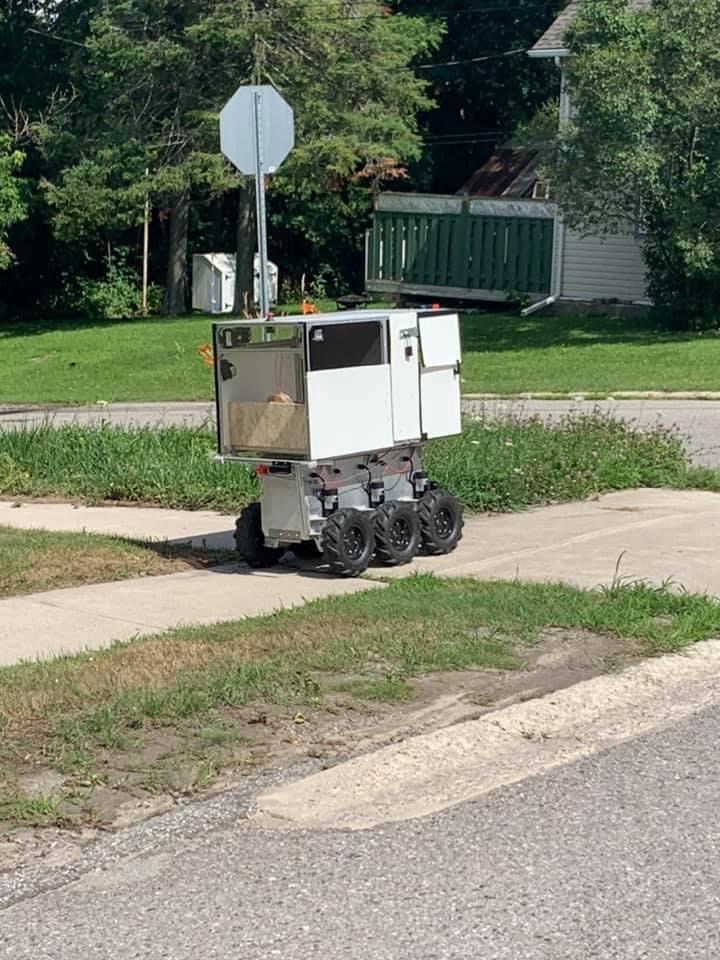Tay residents could be excused for giving a second glance while walking around the community this week.
That’s because the township employed robots to complete its annual sidewalk inspection program in Port McNicoll, Victoria Harbour and Waubaushene as part of a partnership with Top Hat Robotics, a start-up located in Kitchener-Waterloo.
“It was a pilot project that the township signed up for,” Tay roads and fleet services manager Lyell Berstrome said of the unique arrangement.
The robots and the human technicians running them will create a detailed report that will outline any deficiencies in the township’s 18-kilometre network of sidewalk that need to be repaired, according to Bergstrome.
“They had multiple robots and technicians walking around the three municipalities,” said Bergstrome, who noted the project’s cost was low at under $400 because it is a pilot.
It also saves the township man hours of detailing every nook and cranny that needs attention in its sidewalk network.
“It’s beneficial right now with COVID. We didn't end up getting our stummer students we'd normally have so this kind of took a little bit of pressure off our fiscal resources,” Bergstrome said. "For the cost, we couldn't go wrong."
According to the company, the robots are monitored by humans, either in-person or remotely with real-time video feeds.
“Our robots take up less than half of the sidewalk, always allowing people to walk by,” the company noted on its website.
The company touts reduced costs and reduced time needed to map a municipality’s sidewalk system.
The robots are designed with state-of-the-art depth cameras to detect lips, cracks, dips and other sidewalk deficiencies and are accurate to within one milimetre.
“Our robots travel at walking speed and stop when pedestrians are within 10 feet of them. Robots operate on off-peak hours, providing for less pedestrian interruptions. These robots are on track to be semi-autonomous and designed to decrease cost while increasing safety.”
